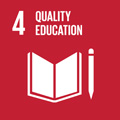- Docente: Giovanni Mugnaini
- Credits: 6
- SSD: M-FIL/04
- Language: English
- Teaching Mode: Traditional lectures
- Campus: Rimini
- Corso: Second cycle degree programme (LM) in Fashion Studies (cod. 6059)
-
from Oct 07, 2025 to Oct 30, 2025
Learning outcomes
At the end of the Course the student: will know the essential arguments of the debate on the relationship between fashion and philosophy; will understand the intertwining of cultural, creative and production processes that characterise the fashion sphere, also by analogy with the various art worlds will be able to interpret the structures that characterise the aesthetic experience in relation to the practices of taste and lifestyles of our times.
Course contents
The lecture course will investigate, from an aesthetic point of view, the complex nature of the concept of fashion and its intrinsic polysemy. Remarks on the meaning of Aesthetics in the contemporary age will be made. Moreover, the complex relations between the “logic” of Popular Culture, Subcultures and Fashion will be considered, and so the meaning and aims of Aesthetics, the most recent amongst philosophical disciplines that has had, historically, rather different interests and different drives than today. Born as companion of logic, Aesthetics bloomed into a vivid field of inquiry, where many different debates mirror the complexity and the web of relations that nowadays ties the art world, the fashion world and the media world.
The course will be divided in the following parts:
A first, general part will be dedicated to a presentation of Aesthetics as a discipline in the contemporary age. This will highlight all the different topics that Aesthetics deals with today, in comparison with its past.
A second part will be devoted to the analysis and the comment of the texts listed in the Bibliography.
During the course an active participation by the students, such as proposing case studies to be studied or to be discussed in class, will be evaluated positively.
Readings/Bibliography
Bibliography
LIST A
Matteucci Giovanni and Marino Stefano (eds.), Philosophical Perspectives on Fashion, Bloomsbury 2017, only the following chapters: Introduction, 1 Philosophical accounts of fashion, 2 Fashion: A Conceptual Constellation, 5 On fashion Criticism.
Svendsen Lars, Fashion. A Philosophy, Reaktion Books, 2006, only the following chapters: 1 Introduction, 2 The principle of Fashion, 5 Fashion and the Body, 6 Fashion and Art.
Naukkarinen Ossi, Contemporary Aesthetics: Time, Space and Content, in “Contemporary Aesthetics” (n. 12/2014), available at: https://digitalcommons.risd.edu/liberalarts_contempaesthetics/vol12/iss1/5/.
LIST B*: At least two texts (so to speak: two chapters or a chapter plus an essay) from the following list:
Haenfler Ross, Subcultures the Basics, Routledge, 2023, from the following chapters: What Is a Subculture?, pp.19-43, How Have Digital Technologies Influenced Subcultures? pp. 289-303.
Kawamura Yuniya, Fashion-ology: An introduction to Fashion Studies, Bloomsbury, 2018, from the following selected chapters: 1 Introduction, 7 Youth Subcultural Fashion as an Alternative System.
Gracyk Theodore, “Popular Musical Subcultures: A Contrarian Analysis”, in Scenari, 21 Dicembre 2024, pp. 169-182.1
Mugnaini Giovani and Marino Stefano, What is punk in Italy today?, in Yvetta Kajanova (ed.), Ubuntu Fusion Music, Peter Lang 2024, pp. 143-165.
Shiner Larry, The Invention of Art, University of Chicago Press 2001, from the following selected chapters: The Greeks Had No Word for It pp. 17-34, Michelangelo and Shakespeare the Art on the Rise, from pp. 35-45.
The bibliography may be subject to changes until the beginning of the lecture course.
*A list of further material will be provided on request, especially for exposing an original case study.
P { margin-bottom: 0.21cm }A.western:link { so-language: zxx }A.ctl:link { so-language: zxx }Teaching methods
Traditional lectures and class discussions with students.
Assessment methods
ASSESSMENT and EVALUATION
The assessment method is written and is based on the submission of a written paper.
The paper must be written using Times New Roman 12, and must be long 7.000 characters min. and 25.000 characters max. (blank spaces included).
The paper must include: Name of the student and Identification number (“Matricola”) / Title of the paper / Main Text (structured in sections) / Bibliography.
Unnamed papers won’t be considered for evaluation.
TOPICS and CASE STUDIES.
The student will write a paper using the resources from the Mandatory Reading list as a bibliography (at least using two different sources) and will produce a case study on a topic that must be agreed with the teacher via email before the end of the course. Extended and critically reasoned bibliography that expand from the proposed bibliography, will be evaluated positively.
The students must read and study all the texts in LIST A (all texts must be read and studied, as usually happens in every Lecture Course at the University), and also read and study at least two texts from the LIST B.
Once the course is over (or during the course as well) the student will agree on a case study with the teacher by sending an email or during teacher's office hours. The paper has to be sent to the teacher as an email attachment (in Word format) at least 15 days before the day of the exam date published on AlmaEsami.
The students can select the topics from the texts that are more interesting for them, and can choose to focus their papers on those topics. It is important that the paper will reflect the comprehension of the main theories and approaches exposed during the course.
In choosing a case study it must be relevant and related to the topics dealt with in class, and it must be agreed upon with the teacher. No phenomena or topics are excluded in principle, but the choice must be supported by applying to the chosen phenomenon the concepts and the theoretical tools learned during the course.
In some cases the teacher may ask the students to integrate and complete the exam (after the submission of the paper) with an oral conversation on the program. Every paper that is delivered can be analyzed using tools capable of identifying the presence of text generated with LLM or AI tools. If a paper would be found to be created with AI or LLM, it won't be evaluated, and therefore the student will have to apply for another exam date.
The examination will ensure the achievement of the following objectives:
- General knowledge of the contents of the material present in LIST A.
- General knowledge of the contents of the chosen material from the LIST B.
- General orientation concerning the characteristics of contemporary aesthetic culture;
- Comprehension of the meaning of the concepts learned in relation to the concrete phenomena taken into account.
P { margin-bottom: 0.21cm }
Office hours
See the website of Giovanni Mugnaini
SDGs


This teaching activity contributes to the achievement of the Sustainable Development Goals of the UN 2030 Agenda.
